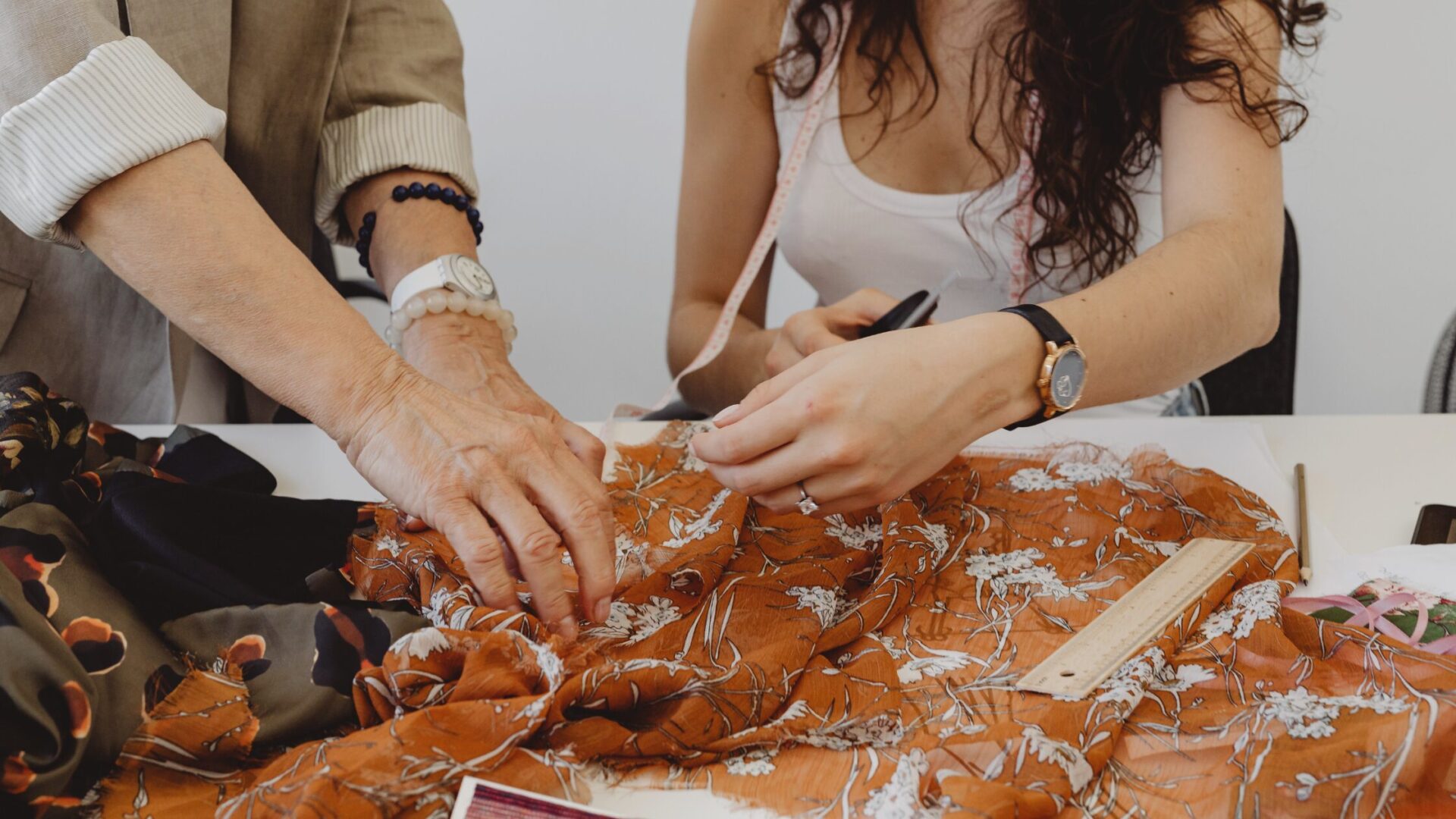You’ve seen the phrases everywhere—”sustainable fashion,” “eco-friendly materials,” “conscious clothing.” They appear in your social media feed, splashed across brand websites, woven into conversations about climate change. We instinctively know these concepts matter, that they represent something important for our planet’s future. But here’s the uncomfortable truth: most of us would struggle to name more than one or two truly sustainable fabrics on the spot.
I remember my own awakening moment. Standing in a clothing store, I confidently reached for an “organic cotton” t-shirt, feeling virtuous about my choice. When a friend asked what other sustainable materials I knew about, I drew a complete blank. That embarrassing realization became my gateway into understanding the complex, fascinating world of eco-conscious textiles.
This guide breaks down which materials genuinely minimize environmental harm, why they matter, and—most importantly—how you can start making better choices without feeling overwhelmed.
What Makes a Material Truly Sustainable?
Before diving into specific fabrics, let’s establish what “eco-friendly” actually means in the textile world. It’s not just marketing speak—there are concrete criteria that separate genuinely sustainable materials from greenwashed alternatives.
Sustainable textiles are evaluated through two critical lenses: their origin and their production process. The best materials minimize environmental damage at every stage, from cultivation or harvesting through spinning, weaving, and dyeing.
Sustainably grown natural fibers come from plants cultivated without synthetic pesticides or chemical fertilizers, or from animals raised with welfare standards that protect both creatures and ecosystems. These methods preserve soil health, protect water quality, and maintain biodiversity.
Recycled and regenerated materials transform waste into valuable resources. Instead of extracting virgin materials from the earth, these fabrics give discarded plastic bottles, old clothing, and industrial waste a second life. This circular approach dramatically reduces resource consumption and keeps materials out of landfills.
The thread connecting all sustainable materials? A commitment to minimizing harm throughout the entire lifecycle—a principle that directly contributes to resource conservation, waste reduction, and the elimination of toxic chemicals from our environment.
Why This Conversation Matters Now
The urgency around sustainable fashion isn’t manufactured hype. It stems from sobering realities about conventional clothing production and a fundamental shift in how consumers understand their purchasing power.
The Environmental Toll of Fast Fashion
The fashion industry ranks as the world’s second-largest polluter after oil, responsible for 2% to 8% of global carbon emissions. That statistic alone should give us pause, but the environmental damage extends far beyond carbon footprints.
Consider water consumption: conventional cotton cultivation drains vast quantities of water while simultaneously polluting soil and waterways with pesticides and chemical fertilizers. The industry’s “disposable culture” has turned clothing into nearly 8% of municipal solid waste in landfills. And every time we wash synthetic garments, they release microplastics—accounting for 20% to 35% of primary microplastic pollution in our oceans.
The Human Cost
Environmental impact tells only part of the story. Behind fast fashion’s rock-bottom prices lie exploitative labor conditions: poverty wages, excessive working hours, and exposure to harmful chemicals that endanger workers’ health. Animal welfare concerns—like live-plucking for down production—add another ethical dimension that conscious consumers can no longer ignore.
A Shift in Consumer Values
Something profound is happening in how people shop. Recent surveys reveal that 57% of consumers in English and German markets are willing to change their lifestyles to reduce environmental impact, while 67% consider sustainable materials important when making purchases. Younger generations, particularly Gen Z, are driving this transformation, embracing resale platforms and circular fashion with enthusiasm that’s reshaping the industry.
Understanding why sustainable fashion matters transforms shopping from a mundane task into meaningful participation in environmental stewardship.
The Materials That Make a Difference
Let’s explore the fabrics leading the sustainable revolution—each with unique characteristics that make choosing the right material for your needs easier.
Natural Fibers Worth Knowing
Organic Cotton grows without synthetic pesticides, GMOs, or chemical fertilizers. It requires less water than conventional cotton and nurtures rather than depletes soil health.
Hemp and Linen are remarkably self-sufficient crops. They need virtually no water or pesticides, grow rapidly, and actually enrich the soil. Their natural durability means garments last longer, and they biodegrade completely at end-of-life.
Alpaca Wool offers a lighter environmental footprint than sheep’s wool. Alpacas graze more gently, causing less pasture damage, and their fiber requires no harsh chemical processing.
Cork presents an ingenious sustainable option. Harvested from cork oak bark without harming trees, it’s renewable, biodegradable, and brings a distinctive texture to accessories and footwear.
Giving Materials a Second Life
Recycled Cotton transforms discarded garments and manufacturing scraps into new fabric, using significantly less water and energy than virgin cotton production.
Recycled Polyester (rPET) rescues plastic bottles and other plastic waste from landfills, converting them into wearable fabric while cutting energy use by up to 59% compared to virgin polyester.
ECONYL® regenerates nylon from discarded fishing nets and industrial plastics—simultaneously cleaning up ocean waste and reducing demand for petroleum-based virgin materials.
Deadstock Fabric prevents waste by repurposing over-ordered or unsold textiles, eliminating the need for new production entirely.
Innovative Plant-Based Alternatives
TENCEL™ Lyocell, derived primarily from eucalyptus wood pulp, represents a breakthrough in closed-loop manufacturing. The process recycles 99% of water and solvents used, resulting in exceptionally low environmental impact. Its soft, luxurious feel has made it increasingly popular among conscious consumers.
Piñatex® turns agricultural waste into opportunity. This leather alternative uses pineapple leaf fibers—byproducts that would otherwise be discarded—requiring no additional land or water resources.
Spider Silk Protein and SCOBY Leather showcase the cutting edge of biomaterial innovation, offering biodegradable alternatives that use minimal resources and produce virtually no harmful waste.
A Word of Caution
Even materials marketed as eco-friendly deserve scrutiny. Bamboo, for instance, grows rapidly and seems environmentally ideal—until you learn that converting bamboo fiber into soft fabric often requires toxic chemicals. The resulting “bamboo rayon” may not be as green as its marketing suggests. Always investigate not just the raw material but the entire manufacturing process.
Making Sustainable Choices in Real Life
Knowing about sustainable materials matters little if we don’t translate knowledge into action. Here are practical strategies for building a more conscious wardrobe.
Read the labels. Look beyond brand names to actual material composition. Tags indicating “organic cotton” or “recycled polyester” are your first clue, while certifications like GOTS (Global Organic Textile Standard) or GRS (Global Recycle Standard) provide verified assurance of sustainability claims.
Prioritize longevity over trends. Fast fashion’s greatest environmental sin isn’t what it’s made from—it’s how quickly it’s discarded. Choose versatile, well-constructed pieces you’ll wear for years. Since adopting this approach, I’ve found my closet becoming more streamlined, filled only with garments I genuinely love and wear regularly.
Explore secondhand options. The most sustainable garment is the one that already exists. Today’s vintage shops and resale apps have transformed secondhand shopping from stigmatized necessity to treasure hunt. You’ll often find higher-quality pieces at lower prices while keeping perfectly good clothing out of landfills.
Your First Step Forward
Building a sustainable wardrobe isn’t about perfection—it’s about progress. You don’t need to replace your entire closet with certified organic textiles tomorrow. Start small: next time you need new clothing, pause before purchasing. Check the material tag. Research the brand’s practices. Consider whether you’ll still love and wear this item in five years.
These seemingly minor decisions accumulate into significant impact. When millions of consumers shift their purchasing patterns even slightly toward sustainable materials, the fashion industry responds. Brands invest in better practices. Innovations accelerate. Supply chains transform.
Sustainable fashion represents more than environmental responsibility—it’s an invitation to reconnect with our clothing, to understand where it comes from and what it represents. In choosing eco-friendly materials, we’re not just protecting the planet; we’re participating in a broader cultural shift toward mindfulness, quality, and respect for the resources that sustain us.
Your journey into conscious fashion begins with a single choice. Why not make that choice today?
Sources
35 Sustainable Materials For Eco-Friendly Fashion
A guide to the 10 most sustainable fabrics
The Top 8 Sustainable Fashion Materials for Clothing Brands
A Guide To Sustainable Fashion Materials








